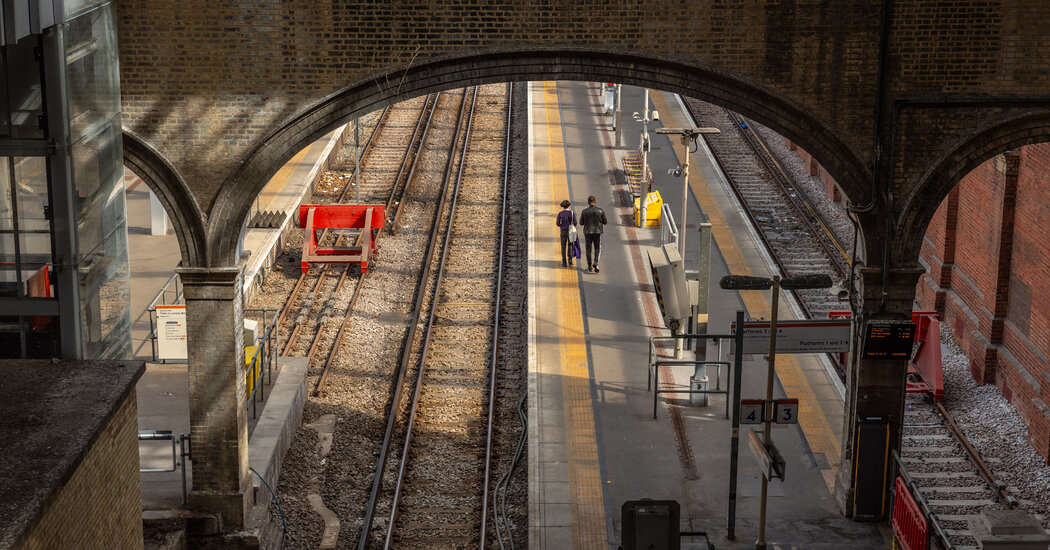In the early 1870s, an émigré painter watched from a railway footbridge as a steam engine left a station on London’s suburban fringe. His name was Camille Pissarro and he was developing a style of plein-air painting that would soon be called “Impressionism.”
Pissarro and a fellow émigré, Claude Monet, only stayed in London for a few months. By April 1874 they were among the painters holding the first Impressionist exhibition in Paris, the subject of a retrospective that runs until July 14 at the Musée d’Orsay and opens on Sept. 8 at the National Gallery of Art in Washington D.C.
But London was one of their early muses. Monet painted the River Thames and the Palace of Westminster, among other central landmarks, while Pissarro captured scenes in suburbs where houses and train tracks were replacing forests and farmland.
I have a special interest in Pissarro’s train painting because it shows the neighborhood where my wife grew up — in a Victorian home rendered as a “smudge” on the Impressionist’s canvas, as my father-in-law says.
The railway, shuttered in the 1950s, is now a nature path where our kids forage for blackberries during visits to their grandparents.
On our last visit, I decided to find out what Pissarro saw in that train, and what his early London paintings tell us about Britain’s Victorian past. I learned that his brushstrokes captured a moment of dramatic urban transformation whose impacts on the city’s layout are still visible today.
My Pissarro project entailed long winter walks, trips to museums, a ride on a vintage locomotive and a dash of investigative reporting around an arcane mystery. My main guide was my father-in-law, a former “trainspotter” with a white-hot interest in railroad history.
‘Fog, snow and springtime’
A 1990 history of my in-laws’ area describes the old railway as “lost.” But, like other locations that Pissarro painted in Southeast London, the site where the tracks once ran wasn’t hard to find. I could see it through a bedroom window, just beyond the camellia and winter jasmine.
Pissarro, a Danish citizen fleeing a Paris suburb during the Franco-Prussian War, was used to being an outsider. He had been born on the Caribbean island of St. Thomas to Jewish parents of French descent, and moved to Paris in 1855 after a few years in Caracas.
But he wasn’t completely isolated when he arrived in London with his partner, Julie Vellay, and their two young children in December 1870. They stayed…
Click Here to Read the Full Original Article at NYT > Travel…
